Ice Dams: How To Prevent Ice Dams & Protect Your Roof
Every year when snow begins to fall and we experience sub-freezing temps in Denver, we start to get calls from concerned customers about ice dams. It happens like clockwork, and we are there to answer the call and help.
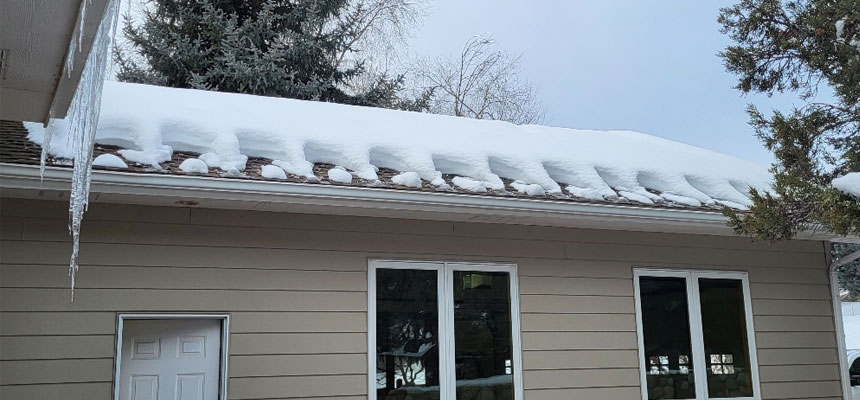
How Ice Dams Form
Ice dams are formed by snow when the temperatures fluctuate between the days and nights during winter. The snow on the roofs will melt during the day and start to drip off the roof and into the gutters. Once the sun goes down the melted snow will freeze and turn to ice overnight creating a barrier and/or icicle on the edge of the roof. North facing parts of roofs in Colorado are more likely to have ice dams because this side of the house receives the least amount of sunlight throughout the day.
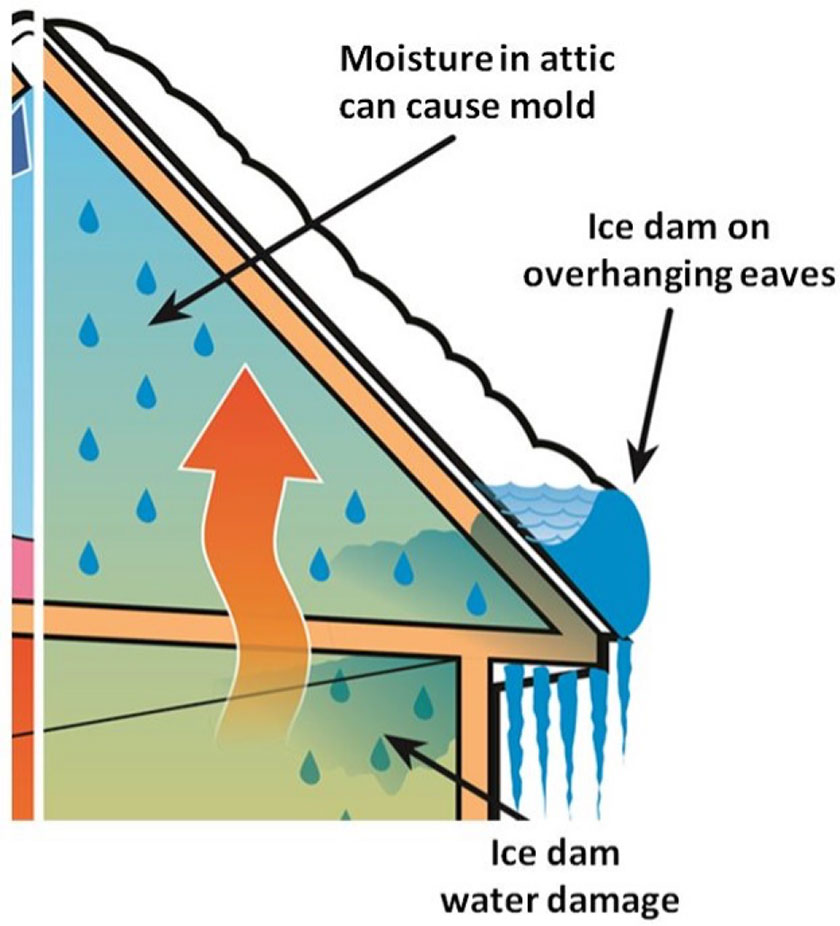
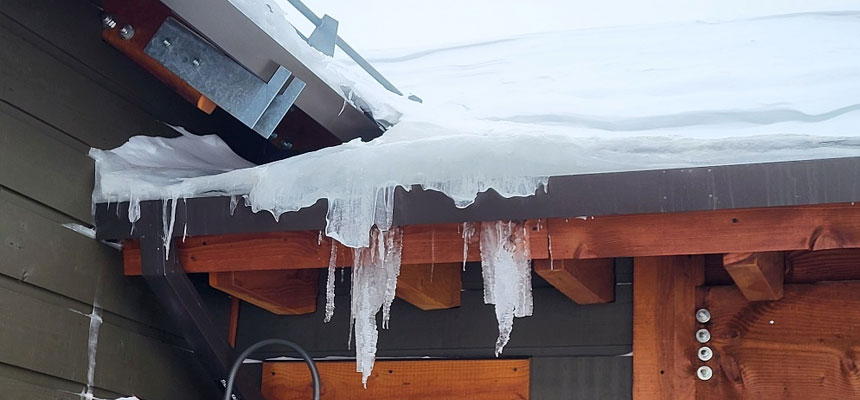
Poorly insulated attic space can also lead to the formation of ice dams. The lack of attic insulation will cause the snow to melt faster off the top portion of the roof where the radiant heat escaping from the home collects. The snow then melts slower once it reaches the lower edge of the roof where the radiant heat from the living space is less. Once the snow builds up enough in this areas the snow and water refreeze over and over. The water freezes under the shingles and when it starts to melt again it drips into the soffit and even directly into the home. If a home has bad ice dams, they usually also experience icicles that can cause damage to the facia, soffit, and siding.
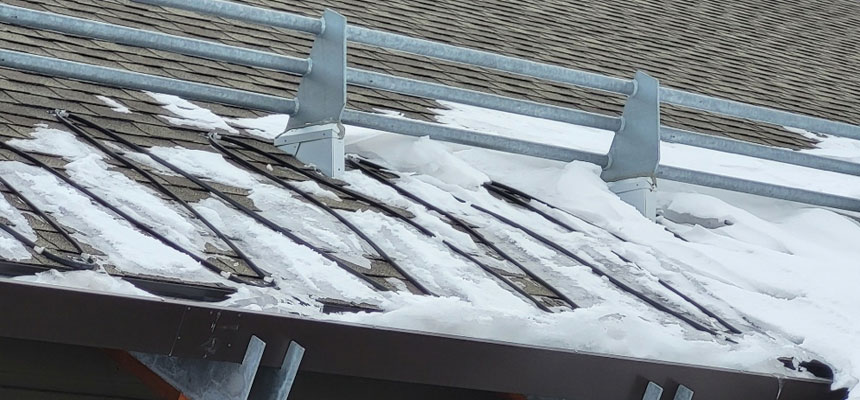
Homes with multiple levels and dimensions can be more prone to ice dams. We often find ice dams in valleys of roofs where two faces meet and water drains off. Because of this these areas can be the most problematic. The melted water moves down the roof valley to the gutters (most of the time this drainage point is an inside corner) if the drainage is not adequate large ice build ups form. In extreme cases fascia and soffit can be completely separated and must be repaired or replaced.
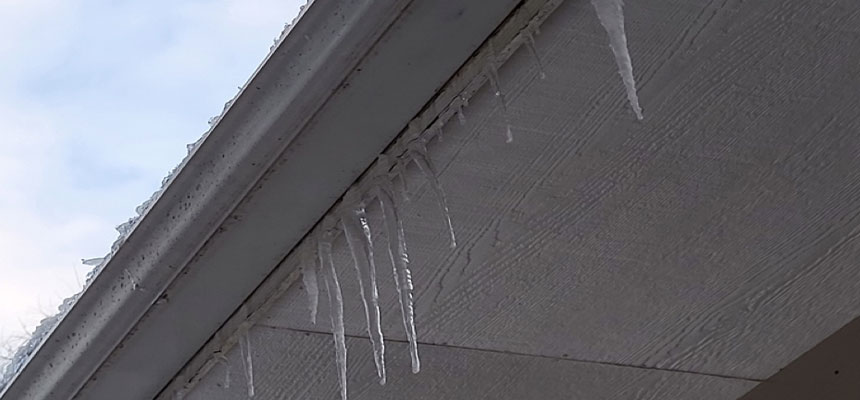
What not to do
Excel Roofing has seen many DIY fixes to ice dams, and they do not solve your issue. We’ve heard stories of customers using hot water, ice melt, and torches. While doing this helps speed up the melting process, it will not melt the entire ice dam and will not solve the issue going forward. Ice dams will continue to form if a permanent solution is not installed. There is no quick fix to getting rid of ice dams other than climbing on the roof and chipping the ice away. However, that is extremely dangerous. Let’s leave it to the pros: Excel Roofing.
Ways to protect your roof with ice dams
Ice and water shield is required by building codes in most cities, counties and jurisdictions in Colorado and Wyoming. With proper installation, ice and water shield can help protect your roof from leaks caused by ice dams. When installing the ice and water shield code demands that it be installed 24 inches beyond the heated wall. Ice dams can melt overtime and cause water to get underneath the shingles and into the home. This is your best line of defense from preventing damage. Excel recommends every house have Ice and Water Shield installed on the eaves even if it is not required by the code and as a rule, we do install it in every roof valley on all projects.
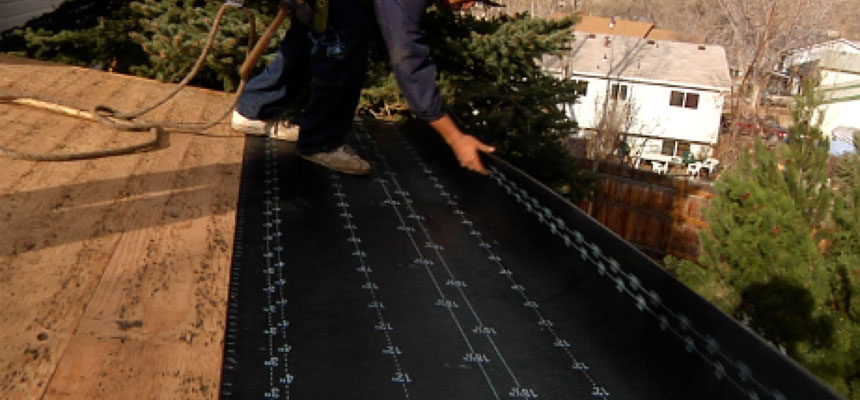
Excel also recommends making sure your house is properly insulated and ventilated. This adds many benefits to your home not just helping with ice dams. Proper insulation and ventilation is integral to the roof system as a whole and will help with maintaining the proper ambient temperature during all seasons. Please see our blog post here for more info: https://www.excelroofing.com/attic-ventilation/
Heat Cable
Heat cable is Excel Roofing’s best solution to ice dams. Heat cable is installed directly on the roof close to the eaves. It is installed in a zigzag pattern approximately two feet up the roof, and through the gutters and downspouts to help prevent ice from freezing there as well. If you are having ice damning issues on your home please call us. We would be more than happy to give you a free estimate to install the ice melting system that is right for your property.
YouTube Link:
Check out our YouTube channel for a video about ice dams and heat cable from the owner J Bretz. https://www.youtube.com/watch?v=YIgGxW8MMkY





